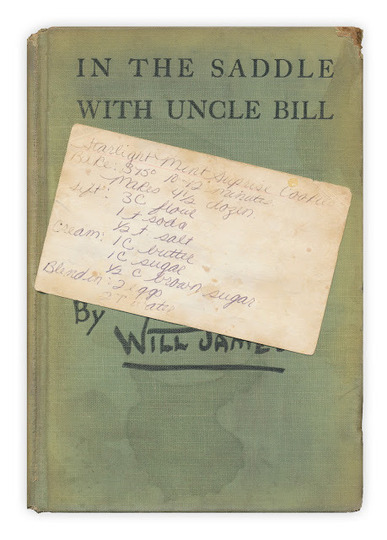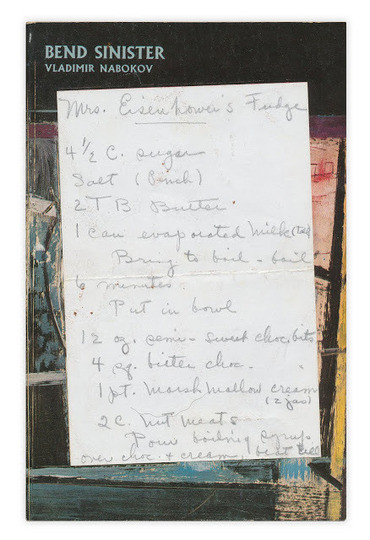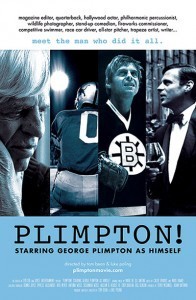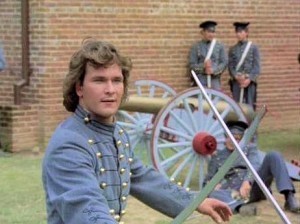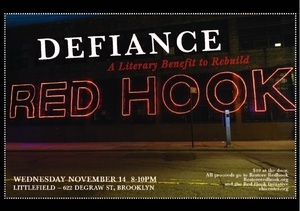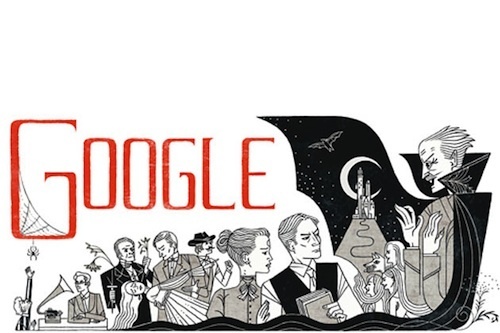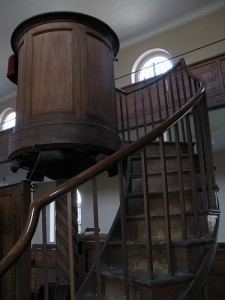The Paris Review's Blog, page 874
November 9, 2012
Making Monuments

Library of Congress
From the time I was really young, I carried around an excellent fact about my father: he’d once stood on the very top of the Washington Monument. On the pointy tip, on the outside. That was the notion that I grew up with. I remember having some trouble picturing the circumstances in which he might have done this. We lived in the Maryland suburbs of D.C. and so I often saw the monument out the car window on trips downtown. I think I felt some retroactive worry for his safety, and I wondered about his apparently incredible sense of balance, but the truth of the story was never in doubt. It came up casually in conversation. Questions were shrugged off, or maybe I was too young to understand. Apparently it had to do with his job.
Later on he told me more. My father was a young engineer involved with the 1934 renovation of the monument. (That’s not a typo: He was born in 1908, and he was fifty-three years old when I was born in 1961.) Scaffolding had been erected all around, and as part of the project the solid aluminum point that sits on the very top was removed for refurbishment, leaving a flat square of marble. My father gave me the impression that he actually stood, or stepped, on that square, about 555 feet off the ground, before the point was reset. Judging from pictures I’ve recently found of other men standing around it, I’m not totally sure about that. Even so I’m not any less impressed than I ever was. I always thought my father was a pretty goddamn cool guy.
Sinister Fudge, Ecstatic Pickles
 Handwritten Recipes is a wonderful blog devoted to recipes discovered between the pages of unrelated books. Now, blogger Michael Popek has collected his finds in a book that manages to combine social history, literary history, and, yes, recipes. Each image is a story: Did the quotidian demands of dinner intrude on Catch-22, or was the reader’s mind wandering? Did a neighbor drop by with a recipe? Was it solicited, or forced on the cook and consigned to bookmark status? The world may never know, but it’s fun to speculate. Below, just a few favorites.
Handwritten Recipes is a wonderful blog devoted to recipes discovered between the pages of unrelated books. Now, blogger Michael Popek has collected his finds in a book that manages to combine social history, literary history, and, yes, recipes. Each image is a story: Did the quotidian demands of dinner intrude on Catch-22, or was the reader’s mind wandering? Did a neighbor drop by with a recipe? Was it solicited, or forced on the cook and consigned to bookmark status? The world may never know, but it’s fun to speculate. Below, just a few favorites.
What We’re Loving: Dune, Anno, Common Prayer
 Not long ago I had the honor of performing a wedding between a Swede and a Russian Jew. It was not a religious ceremony (unless you count the Universal Life Church), but when the three of us sat down to discuss vows, the bride and groom agreed that the Book of Common Prayer couldn’t be beat; we just had to kill the “obey” clause and the stuff about God. It felt funny, crossing out words in my great-grandfather’s prayer book, but according to a new monograph by Daniel Swift, Shakespeare did pretty much the same thing, repeatedly. Shakespeare’s Common Prayers: The Book of Common Prayer and the Elizabethan Age makes a case for the Anglican liturgy as a work of politics and art and as a crucial influence on English literature. It made for perfect candelight reading after lower Manhattan lost power. —Lorin Stein
Not long ago I had the honor of performing a wedding between a Swede and a Russian Jew. It was not a religious ceremony (unless you count the Universal Life Church), but when the three of us sat down to discuss vows, the bride and groom agreed that the Book of Common Prayer couldn’t be beat; we just had to kill the “obey” clause and the stuff about God. It felt funny, crossing out words in my great-grandfather’s prayer book, but according to a new monograph by Daniel Swift, Shakespeare did pretty much the same thing, repeatedly. Shakespeare’s Common Prayers: The Book of Common Prayer and the Elizabethan Age makes a case for the Anglican liturgy as a work of politics and art and as a crucial influence on English literature. It made for perfect candelight reading after lower Manhattan lost power. —Lorin Stein
A Crime Writer Turns to Crime, and Other News
A Texas crime writer has been sentenced to thirty years for paying to have her husband murdered.
Ten things you may not have known about the Brothers Grimm.
Is horror a genre beyond redemption? Or, as The Guardian puts it, damned to literary hell?
“Don't worry about growing up,” and other advice from F. Scott Fitzgerald to his daughter.
Behold: the bibliochaise.
November 8, 2012
Sunday! Plimpton! Screens at DOC NYC: Mention TPR for $5 Tickets!
This Sunday, join filmmakers Tom Bean and Luke Poling, along with Paris Review editor Lorin Stein and publishing luminary Terry McDonell, for a special screening of Plimpton! Starring George Plimpton as Himself at the School of Visual Arts Theatre, hosted by the documentary film festival DOC NYC.
For discounted tickets to this and other films playing in DOC NYC, mention The Paris Review at the box office.
(Plimpton! also shows on Wednesday, November 14.)
$5 tickets are limited to two per person. To take advantage of this offer, go to the IFC Center box office at 323 Sixth Avenue (at West Third Street), open seven days a week, 11 A.M.–10 P.M. For films playing at the School of Visual Arts Theatre (333 West Twenty-Third Street, west of Eighth Avenue), you can purchase tickets in advance at the IFC Center up until the day of the show. On the day of SVA showings, tickets will only be available at SVA Theatre. This offer is not available for online purchases. For online purchases, get your tickets here.
Smoke Lingers
My first encounter with Patrick Swayze was not, like many of my classmates’, in a suburban movie theater, watching his robust muscles seductively grip Jennifer Grey’s tiny pelvis to the sounds of Mickey & Sylvia. The night I met him on the small television in the kitchen, my mother washing dishes in the background, instead of a form-fitting tank top Swayze was wearing the distinguished gray uniform of the Confederate States Army. Before he played the Catskills dance instructor of teenage girls’ dreams, Swayze was Orry Main, a good ole fighting South Carolina boy whose best friend is a damn Yankee, in North & South, the melodramatic 1980s miniseries that reduced one of the country’s most devastating slabs of history to coquettish glances thrown from beneath floppy straw hats and above buxom gowns. At age six, too young to comprehend the definition of secession, much less the horrors of slavery, I watched the scenes of sprawling plantation estates with the same intensity as an afternoon fix of He-Man and the Masters of the Universe. It was the first time I heard the words civil war.
Years and textbooks later, the intricacies of this defining upheaval continued to compel me more than any other period in our country’s history. Each moment of the war—those first foreboding booms over Fort Sumter, the hundreds of thousands of lives replaced by bloody corpses, Abraham Lincoln’s searing call for freedom—seemed fraught with political, economic, and moral complexity. Patrick Swayze ushered me into this suspenseful drama, Ken Burns’s The Civil War took me deeper, and I didn’t want to leave. Read More »
Defiance: A Literary Benefit to Rebuild Red Hook
Last week, the waterfront neighborhood of Red Hook, Brooklyn, was one of the areas shattered by superstorm Sandy. On Wednesday, November 14, join host Kurt Andersen; musicians Steve Earle and Stew; novelists Joseph O’Neill, Sam Lipsyte, and Rivka Galchen; nonfiction luminaries Phillip Lopate, Chuck Klosterman, Philip Gourevitch, Meghan O’Rourke, Deborah Baker, Robert Sullivan, and others for Defiance: A Literary Benefit to Rebuild Red Hook. Readings will center on the themes of recovery and rebuilding, drawing on more than two centuries of literature about the historic neighborhood.
The event takes its name from Fort Defiance, the revolutionary-era citadel that once loomed over Red Hook, keeping ferry routes clear for General George Washington’s Continental Army. One hundred percent of the proceeds from the evening will be divided between two nonprofit organizations that are leading Red Hook’s post-Sandy recovery, Red Hook Initiative and Restore Red Hook. Learn more and buy tickets here.
Happy Birthday, Bram Stoker
Web surfers will have noticed Google’s celebration of the Dracula scribe’s big 1-6-5 in today’s doodle. But the celebrations don’t end there: Galleycat has rounded up free Stoker e-books, while those across the pond enjoy a Bram Stoker Wedding. Enjoy an excerpt from the 1922 silent film version of Nosferatu:
The Other Election
Computers, phones, radios, televisions, and carrier pigeons are chirping with talk of Tuesday’s hard-fought presidential election. The election is a time-honored American tradition. But long before there were exercises of democracy to occupy our collective attention, Americans were preoccupied with a different kind of election entirely.
The Pilgrims brought their belief in predestination with them to Plymouth, and the Puritans planted the doctrine in the Massachusetts Bay Colony. Many are called, they argued, but few are chosen. Those chosen by God for salvation receive mercy, while the reprobate receive the justice they deserve.
The question of whether or not one had been elected for salvation filled one’s wakeful days and dreaming nights. Read More »
San Francisco vs. New York, and Other News
The bestseller lists from two beloved bookstores show what San Franciscans and New Yorkers, respectively, are reading. (Spoiler: everyone loves Junot Díaz.)
But which book about Lincoln? Experts help you narrow it down.
Print is dead, and nine other conversations the folks at Book Riot would just as soon, in a perfect world, never have again.
Tats inspired by children’s books. Yes, The Giving Tree and Le Petit Prince are represented, but so are Ramona and Harriet Welsh! And you have to love the simplicity of this Narnia ink.
The New York Public Library donated the food that would have been served at their annual fundraising gala to people affected by Hurricane Sandy.
The Paris Review's Blog
- The Paris Review's profile
- 305 followers


